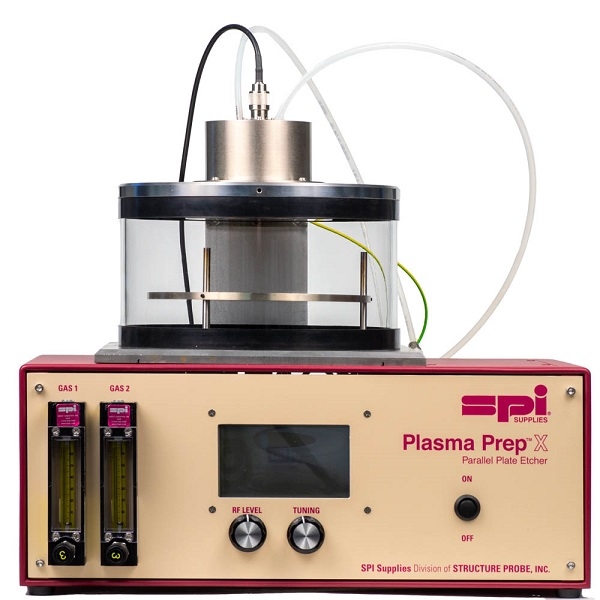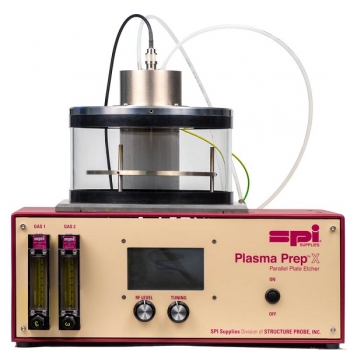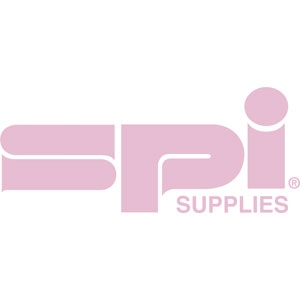Plasma Prep X
For laboratory applications, the typical plasma etcher has a "barrel" design, or in other words, a cylindrical or barrel geometry to the reaction chamber. One feature of this design is that any point on the surface to be etched can be approached with equal probability from all directions, leading to an etch that is described as being "isotropic". For most if not many applications generally, an isotropic design is probably the design of choice. But in some instances, such as the removal of a passivation layer from an electronic device, isotropic etching always results in undercutting, and when the lines are below a certain point in width, such processing completely undercuts the lines leading to the layers literally falling off. But because for a "barrel" design, one can achieve respectable etch rates at relatively low power, the systems can be built and sold at lower prices.
The parallel plate design of an anisotropic etcher permits one to remove a passivation layer without any undercutting! Now we don't want to make it sound like the physics of anisotropic etching were discovered by us (this was certainly not the case) but we were the first to realize the laboratory need for a small relatively inexpensive table top parallel plate system. And in 1985, SPI Supplies introduced the world's first inexpensive table-top design parallel plate system. Most of those systems produced as far back as twenty years ago are still in operation.



